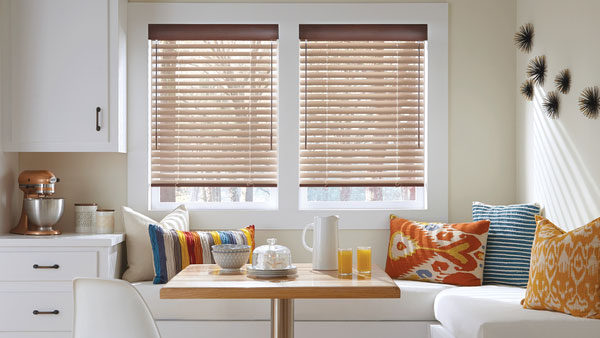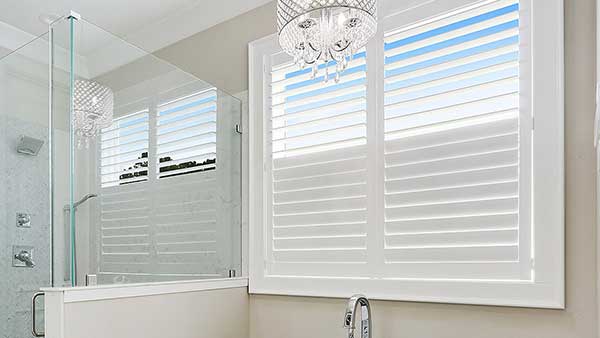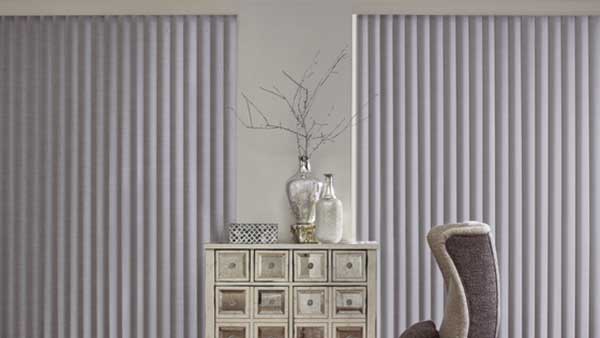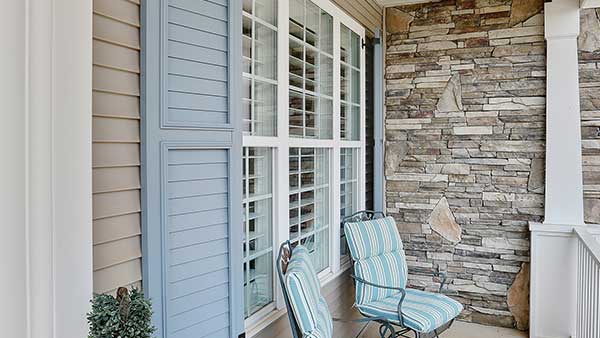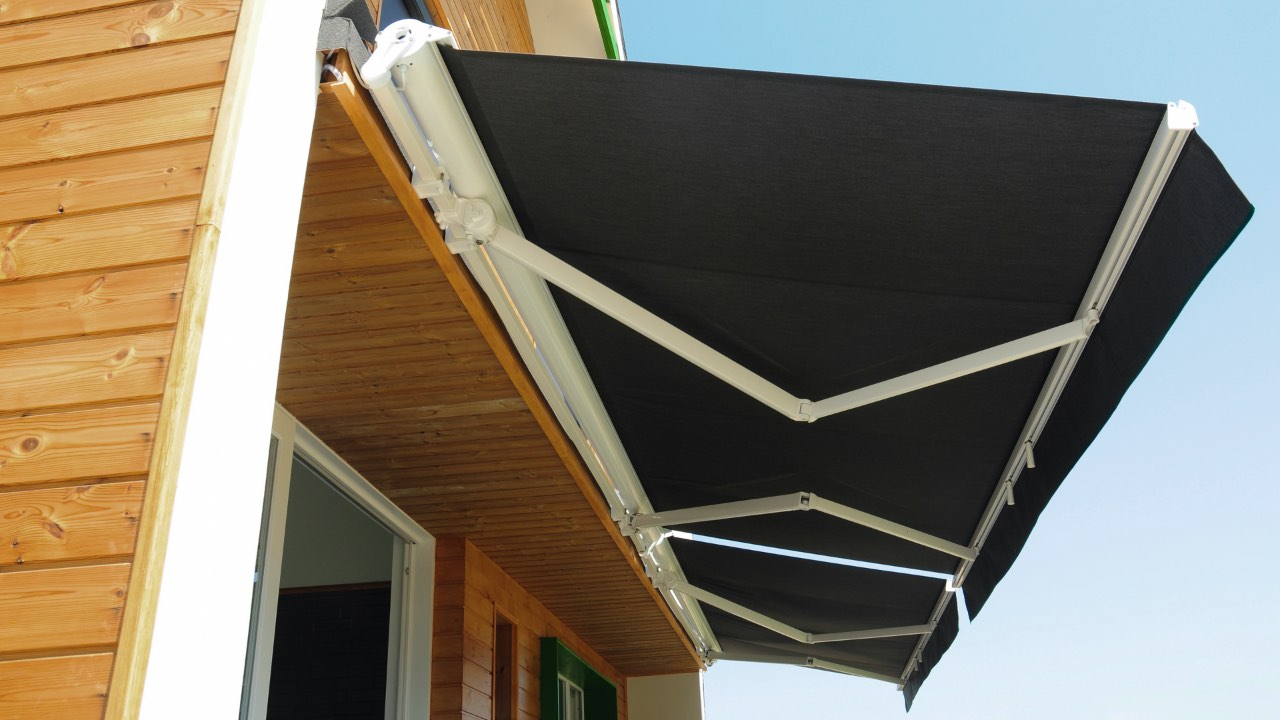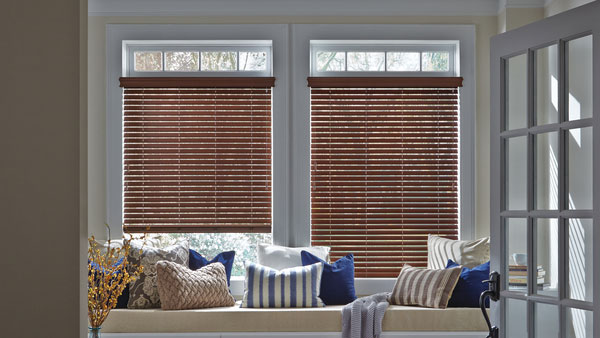This guide shines the spotlight on the variety of options window blinds have to offer and how they perform in their space. Blinds are available in a range of durable materials with differing slat sizes and lift options which function well in various settings. Use this information to help you determine whether blinds are the exact window treatment you have been looking for.
1. Type of Blind
Wood Blinds
These blinds bring comfort to any room with their rich woods and classic lines. Modern wood window blinds offer a large selection of paint colors or stain finishes that maintain their color over time. You can even pick a stain color to match the current decor in your space.
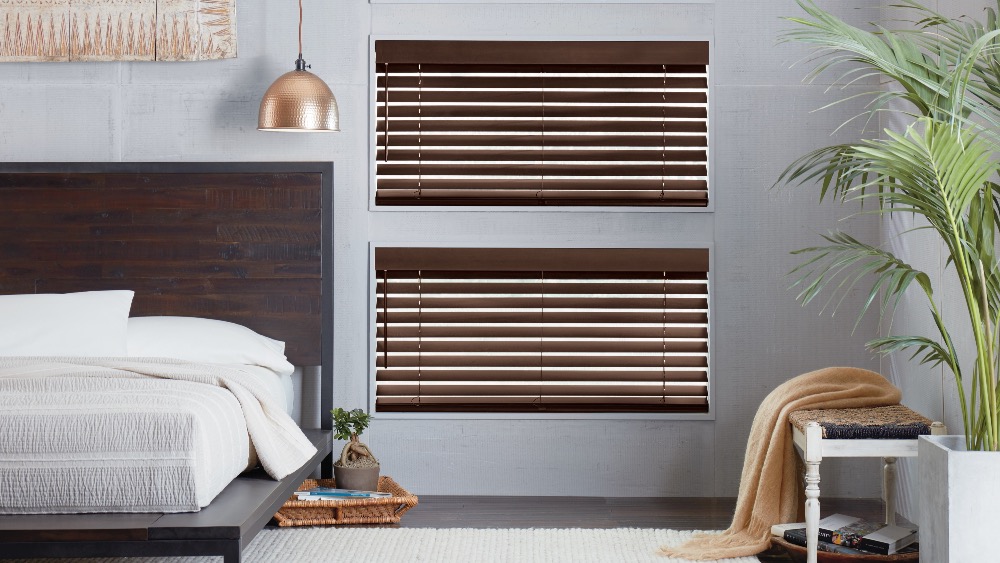
Hunter Douglas Parkland® Wood Blinds with a dark stain lends a feeling of warmth.
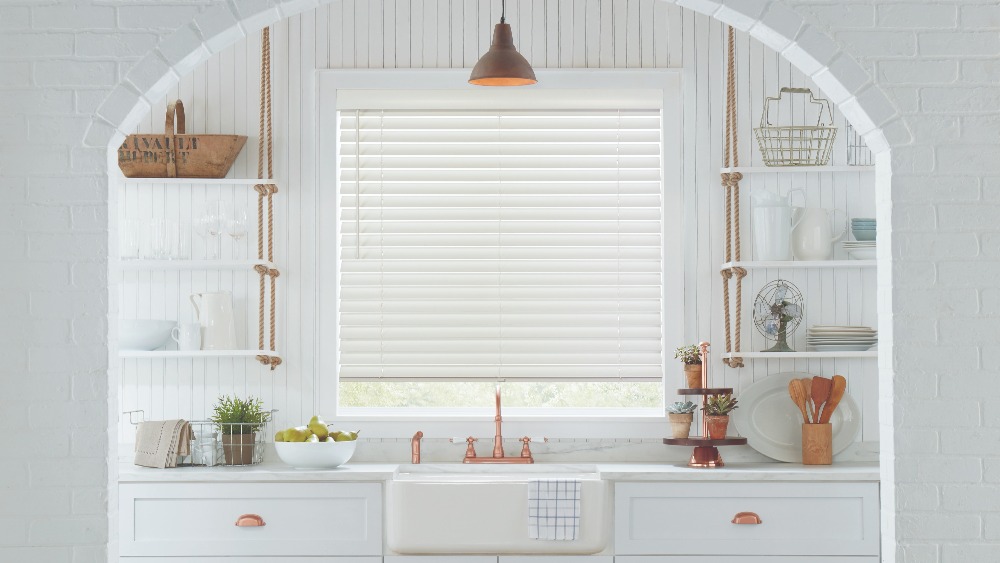
Hunter Douglas Parkland® Wood Blinds with a lighter stained blind gives off a bright, airy vibe.
Faux Wood Blinds
This blind offers the look of hardwoods with a reputation for durability. Faux window blinds are composed of materials that are moisture resistant and protected from fading or warping in the sun. They are the perfect choice for bathrooms or rooms that receive full afternoon sun.
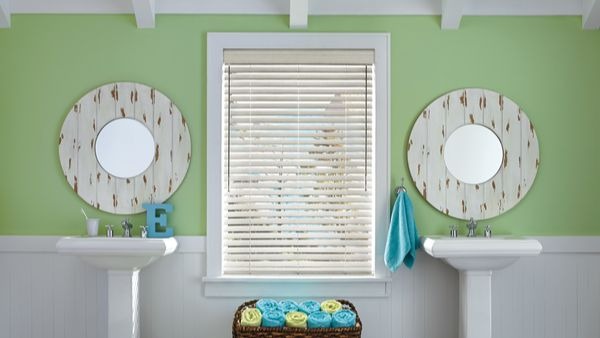
Hunter Douglas Everwood® Faux Wood Blinds are an excellent choice for bathroom windows.
Aluminum Blinds
These blinds stand out as dependable and affordable window treatments, but they are also very versatile. The MagnaView® feature, available in many types of aluminum window blinds, is designed to allow the slats to join together when raised, doubling your view. Aluminums come in a variety of matte, metallic, or pearlescent tones, giving you an opportunity to add color to your space.
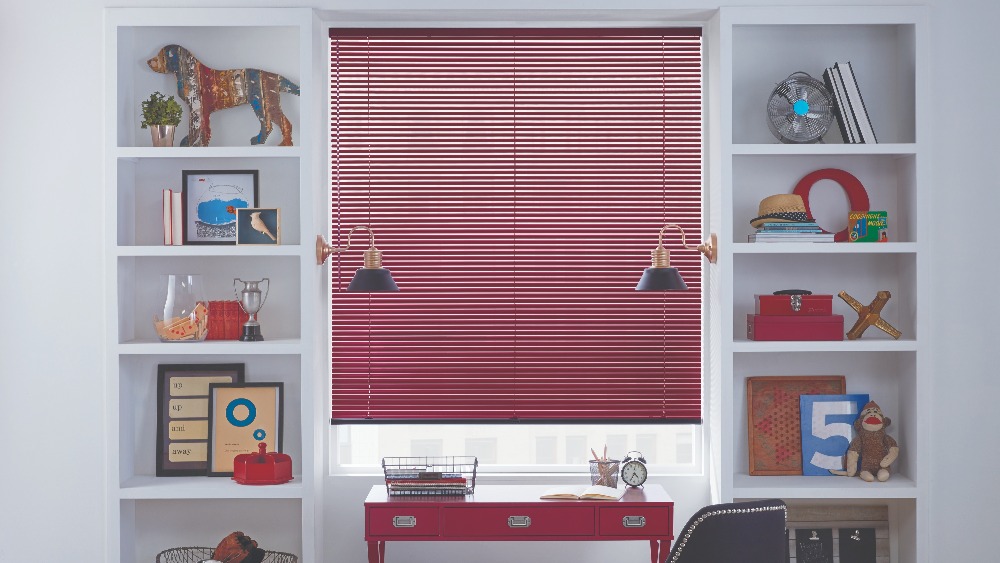
Hunter Douglas Modern Precious Metals® Aluminum Blinds add a splash of color to any room.
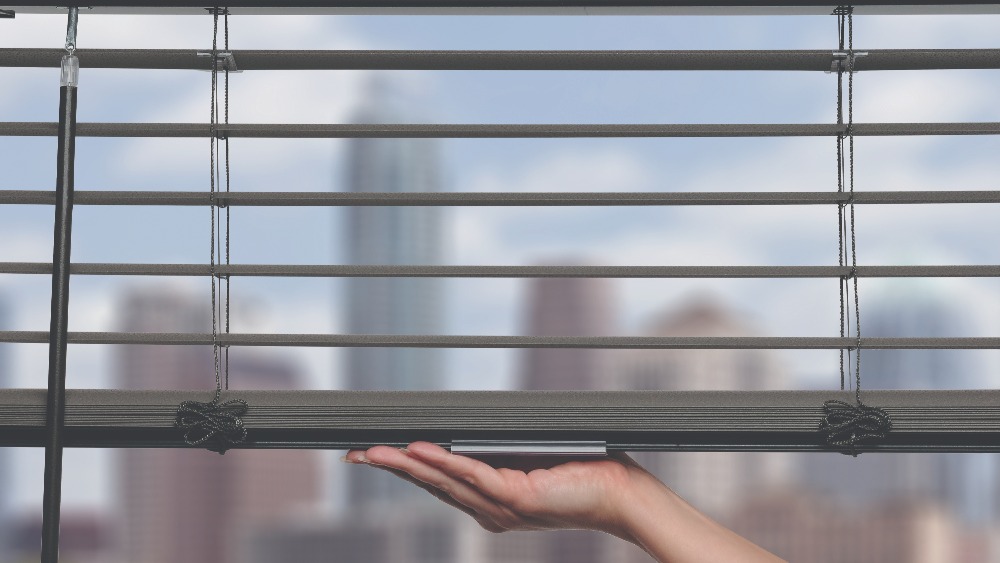
Double the view from your window with MagnaView®.
2. Privacy & Light Control
Blinds are designed for privacy as well as light control and offer an easy way to switch between the two without having to raise or lower your window treatments. By simply opening or closing the slats, you can reduce the sun’s glare on your flooring or furniture or allow a comfortable amount of light into your home. Light filtering blinds are an excellent choice for kitchens or dining areas.
When it comes to room darkening, you can order window blinds with the option of eliminating the cord holes that allow light to seep in. While this may not offer 100% blackout capability, it goes a long way in limiting the amount of light entering your space. For a complete blackout option, roller shades are an excellent choice.

Hunter Douglas Parkland® Wood Window Blinds
3. Slat Size
Choosing an appropriate slat size for your window blinds is an important step in the buying process, and one that you may not have considered. The traditional slat size of 2 inches works well on most any window size. But there are functional and decorative benefits of increasing or decreasing the slat size.
Small slats of 1” or even ½” work well on small or medium windows, as well as windows that are wide but have a short height. Small slats make the window look taller because there are more slats per blind. However small slats on large windows would create a cluttered look and make the window look smaller than it actually is. When open, small slats don’t offer as much natural light as large slats, but when closed, small slats block more incoming light, creating a darker room and greater privacy.
Blinds with large slats complement windows that are both tall and wide. 2 ½” size slats effectively cover large windows without looking excessive. If you put large slats on a small window, the window will look overbalanced and out of proportion. Large slats allow in a greater amount of light when open, increasing your outside view.
One more consideration when choosing the perfect slat size is the depth of your window. You don’t want your blinds to be wider than the windowsill, so choose a slat size that fits within the window’s perimeters.
4. Operation & Safety
Over the years, concerns for safety regarding window blind cords have led to the development of new ways to raise or lower blinds. Now you can choose a lift system that best fits your needs, whether that be safety or ease of operation.
Corded or Manual – Raise or lower your blinds with a cord that locks the blinds in place when the adjustment is done. Tie the excess cord back to the wall with cord cleats to keep your children or pets safe from harm.
Cordless – Raise or lower your blinds by lifting the bottom rail–no cords necessary! The cordless blind option is certified safe for children and pets, and it also adds a clean, sleek look to the room.
Motorized – Open and close slats with the touch of a button from a remote, smartphone, or tablet. Motorized blinds are a great option for hard to reach windows, and they are also safe for children or pets.
If you have corded blinds or are planning on purchasing them, here are several tips to follow from USA Today to make sure your home is a safe place for children or pets.
- Move any furniture away from windows or cords to make them tougher to reach.
- Keep tasseled pull cords as short as possible.
- Remove dangling cords, and keep any others out of reach.
- Double check cord stops are properly installed to limit their movement.
- Keep continuous-loop cords on draperies and vertical blinds anchored to a floor or wall.
5. Mounting Options
Blinds can be mounted either outside the window recess or inside the window frame. An inside mount gives the window a sleek look and is an especially good choice if you have molding outlining your window. Mounting blinds on the outside of the window frame covers the window frame and works well when the depth of the window is shallow, such as on doors.
6. Precise Measuring
One of the most important steps in purchasing blinds for your home or office is getting exact measurements. This step can be tricky, and if you don’t know what you are doing, you may find yourself having to return to your window often to collect a measurement you didn’t know you needed.
Measurements will be different depending on which mounting option you choose. For an inside mounted blind, measure the height and width of the window from the inside casing. For an outside mounted window, measure the exact width from where the blind will be placed. For the height, begin measuring from where the blind will be placed down to the window sill.
Conclusion
Before you buy window blinds that you hope do the trick, write down a list of “must-haves” for both function and style of your window treatments. Then choose the blinds that best meet your criteria. If you are looking for expert advice or need assistance in the buying process, schedule a free in-home consultation with one of our trained professionals at Integrity Blinds and Shutters. They can help you select the best blinds for your space and get the accurate measurements needed to give your windows a custom look.
